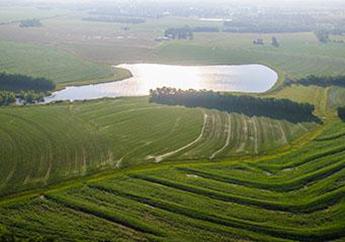
In the 1930s, Americans realized how devastating soil erosion could be as the Dust Bowl swept across the nation, relocating an estimated 300 million tons of soil. Missouri had one of the highest rate of erosion in the nation, which led to the creation of the Missouri soil and water conservation districts in 1944.
After some of the dust blew clear to Washington, D.C., dimming the sun, Hugh Hammond Bennett of the Soil Erosion Service sold President Franklin Roosevelt and Congress on the idea that something had to be done on a national scale. The Soil Conservation Service (now the Natural Resources Conservation Service) was later created in the U.S. Department of Agriculture April 27, 1935. In 1943 legislation authorizing the formation of the Soil and Water Districts Commission and Soil and Water Conservation Districts was passed in Missouri. In 1944 the first 14 districts were organized including Boone, Callaway, Cape Girardeau, Clark, Clay, Daviess, DeKalb, Franklin, Harrison, Gentry, Johnson, St. Charles, Shelby and Worth counties. All of Missouri’s 114 counties would organize districts, many of them during the 1960s.
The Soil and Water Districts Commission develops the policies and general programs for saving the soil and water by the soil and water conservation districts. In 1974, the commission was moved into the Missouri Department of Natural Resources. It now works with the department’s Soil and Water Conservation Program, to assist the 114 local soil and water conservation districts as they promote voluntary soil and water conservation. The districts provide financial incentives, technical assistance and education to agricultural landowners and operators, working with state and federal conservation partners.
Missouri citizens have shown strong support for soil and water conservation and state parks by passing a one-tenth-of-one percent Parks, Soils and Water Sales Tax. The tax was first approved by voters in 1984, and has since been reapproved by two-thirds of Missouri voters in 1988, 1996, 2006 and 2016.
